
When I first lay eyes on the BMW M1, it’s pointing nose-out in front of the BMW Classic service area. I’ve waited 40 years to drive this car – BMW’s rare mid-engined coupe – and for the next two days, this white 1980 M1 is mine. But something prevents me from rushing to the driver’s door. Some secret power forces me to pause, to savour its slender form, to absorb Giugiaro’s masterpiece.
Better to slowly walk around it, soaking up the gentle wedge, recognising the importance of the slim, horizontal line that runs the full length of the body and connects so many different elements of the M1’s so-pure shape. Then walk around it again, discovering and drinking in the exquisite detail: the tiny graceful kidneys in the so-low nose, the various air slots and openings that are both functional and beautiful, and the perfectly positioned BMW roundels, one on each rear corner.
Is it flawless, I wonder? It’s certainly timeless and supremely elegant. Only as I get closer do I appreciate just how low it is: at 1140mm tall, the M1 is a staggering 154mm (that’s six inches!) lower than a 911.

They only hand me the keys when it’s time to leave. Perhaps to lower my expectations, I remind myself that the M1 was conceived as a race car and then made to conform to the road. More, this is the car that famously launched the magical letter M to enthusiasts and, not coincidentally, BMW Motorsport.
Despite the M1’s ultra-low profile, getting in is easy through the large door openings, and there’s plenty of room in the relatively plain cabin. Excellent forward visibility through the huge windscreen is a supercar bonus. To the rear? Not so good. Compromises are few; wheelarch intrusion means the pedals are offset and clutch travel is so long that my leg is almost straight when I shift up through the gears.
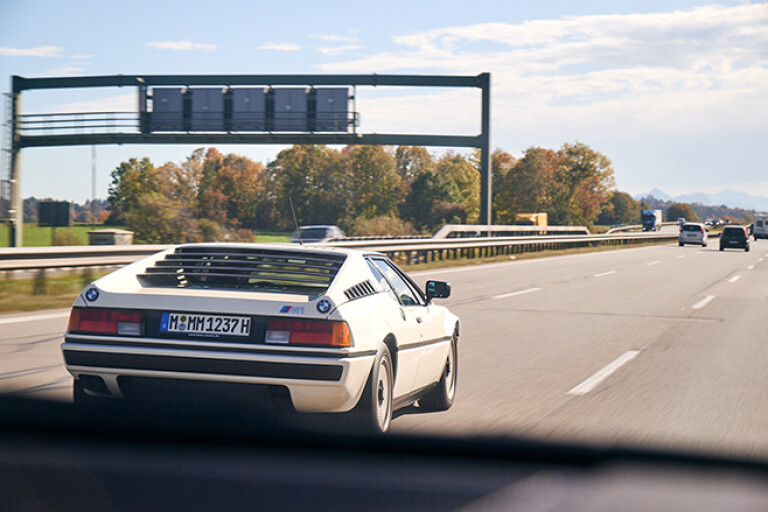
The ZF five-speeder’s dog-leg pattern means first is down and to the left, yet despite developing peak torque of 330Nm at 5000rpm and 204kW of power at 6500rpm, BMW’s wonderful 24-valve, 3.5-litre six is so flexible that first is only ever needed when moving off from standstill. This engine might be race-bred, but it doesn’t feel it. And the gearchange is so utterly mechanical in its action that you can almost feel the individual cogs engaging, especially shifting from second to third.
Engine noise is never less than glorious, even at the slightly lumpy idle. Accelerate hard and the straight-six soars to a hard-edged intake symphony that’s overtaken by exhaust snarl as the tacho needle approaches 6000rpm. As autobahn traffic thins, the M1 swiftly sprints towards its 260km/h V-max. No, it doesn’t feel supercar quick – 0-100km/h takes 6.0sec – yet the M1 is eager, responsive and always encouraging. Here, and as I later learn, on winding roads, its composure and stability are staggering.
A constant joy to drive, yet so easy and relaxed, the M1 inspires confidence, not least because its ride is supple and controlled, soaking up bumps that could jolt or bottom-out a lesser machine. By today’s standards, the modest tyres ensure the grip is less than heroic, but the advantage is the kind of involvement and feel that too many modern supercars lack.
The M1’s only serious flaw is heavy steering below 40km/h. At proper speeds, the steering – BMW’s first rack-and-pinion set-up, remember – is direct and provides an almost intimate relationship between driver, front tyres and the road.
.jpg )
Normally, 300km in a machine as desirable as the M1 would be highlight enough. Except my friends from BMW Classic suggested our M1 adventure should involve a visit to Fritz Wagner.
A wonderfully obsessive visionary, compulsive collector and gifted mechanic, Wagner has cornered the world’s supply of M1s. Not just cars – he has five and maintains at least 14 racing Procar racing versions – but all the spares necessary to literally build an M1 from the wheels up. So I’ve pointed my M1 towards Wagner’s Kolbermoor home/workshop/collection, 65km southeast of Munich, just off the autobahn to Austria.
Not for Wagner a Teutonically organised warehouse, meticulously laid out and arranged by some advanced computer program, so clean you could eat off the benches. Instead, the collection spreads chaotically across half the ground floor of his 100-year-old home and spills out in a variety of ramshackle buildings, scattered around what has, by default, become a large courtyard.
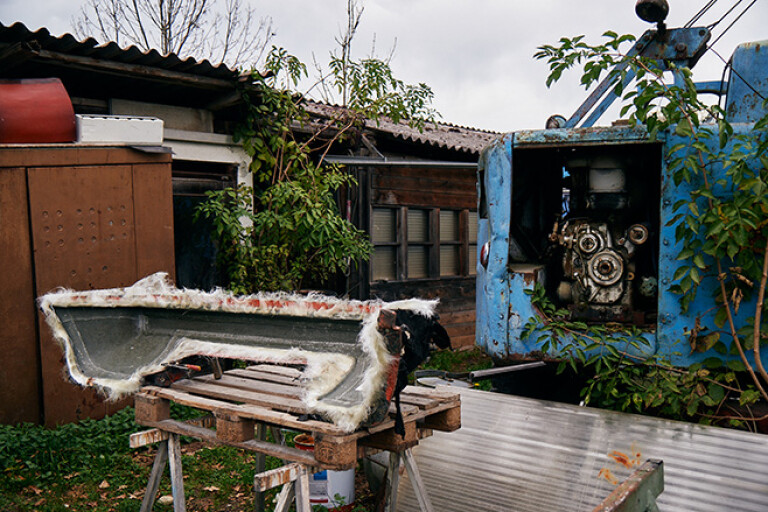
Absolutely nothing can prepare you for the shock of discovering Wagner’s M1s, plus the stock of thousands of residual parts of damaged racing cars, strewn among the barns and sheds. The reality is, if your M1 fails and you need a replacement component, Fritz Wagner is your only option.
“If something breaks down, they come to me and exchange old versus new,” explains Wagner. “I’ve never made a deal out of it; I’m happy keeping these great cars on the track and the road.”
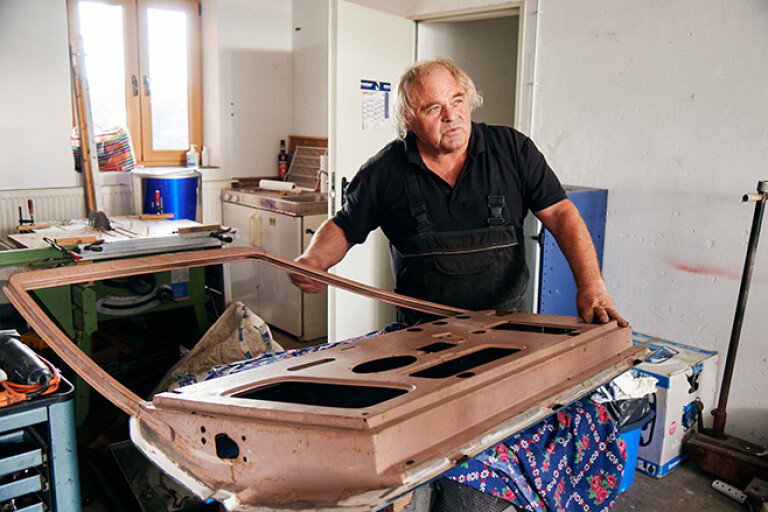
Only Fritz, and perhaps son Marco, who is involved in the Wagner-Motorsport M1 business and operates in exactly the same way – if on a smaller scale – from his home a kilometre away, comprehends this disorder and instantly knows how to find the required part. The rest of us simply stare in amazement at the apparent chaos.
Five complete M1 engines line up on the wooden floor of one shed. Eight crankshafts sit on shelving in another, along with 23 cylinder heads, a number of pistons, wheel hubs, brake calipers, suspension arms and alternators. Even a stockpile of the M1’s BMW roundel is visible.
Body bits, body moulds and door frames hide in the attic of another shed, accessed only by step-ladder. Old photographs and posters of hero M1 drivers – Niki Lauda, Nelson Piquet, Manfred Winkelhock, Christian Danner and Hans-Joachim Stuck – known as Strietzel (junior) Stuck to everyone in motor racing circles in order to distinguish him from his also-famous father – line many of the walls. One of Nelson Piquet’s old helmets sits on the back of his Procar M1. Seats, wheels, springs and complete exhaust systems are spread over the workshop floor. It is impossible for an outsider to see any system in Wagner’s organisation.
When Strietzel Stuck first visited, he told Fritz, “Now I have to go home to sleep to capture this in my head.”
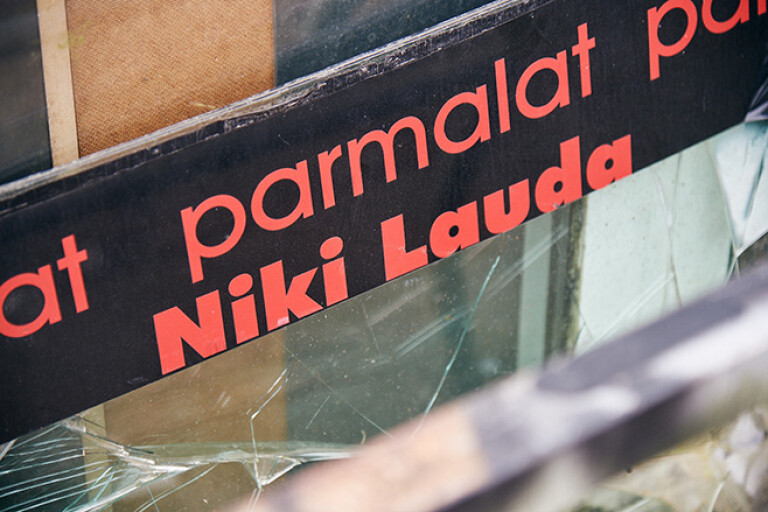
I can’t help asking why Fritz’s collection of M1s and all the assorted M1 parts aren’t maintained as part of BMW Classic’s 1400-strong car/bike collection? Superbly organised and, since 2016, contained in over 13,000 square metres of structures that include a handsome 1918 building that serves as the café/foyer, archive and small museum, Classic is walking distance from BMW’s Munich HQ.
“We’ve talked about buying Wagner’s collection,” admits BMW Classic’s Benjamin Voss, “but Classic knows where the cars and the parts are, that they are safe, and that we have access to them, so we are happy.”
How did this near priceless collection come to be in the hands of Fritz Wagner? Priceless? To give you an idea of the collection’s value, the white M1 (one of five in BMW’s collection) I’m driving has an insurance value of 750,000 Euros ($A1.213m). At the other end of the scale, Andy Warhol’s M1 art car is apparently worth almost A$50m.
Over an alfresco lunch, Fritz – now 66, stocky, friendly, permanently in overalls, his long hair thick and matted, his handshake forceful, the dirt and oil of his work ingrained into his hands and fingernails – explains.
When, at 24 years of age, the racing mechanic and passionate motorsport fan first saw images of the M1 in 1977, he knew “that’s the car of my life.”
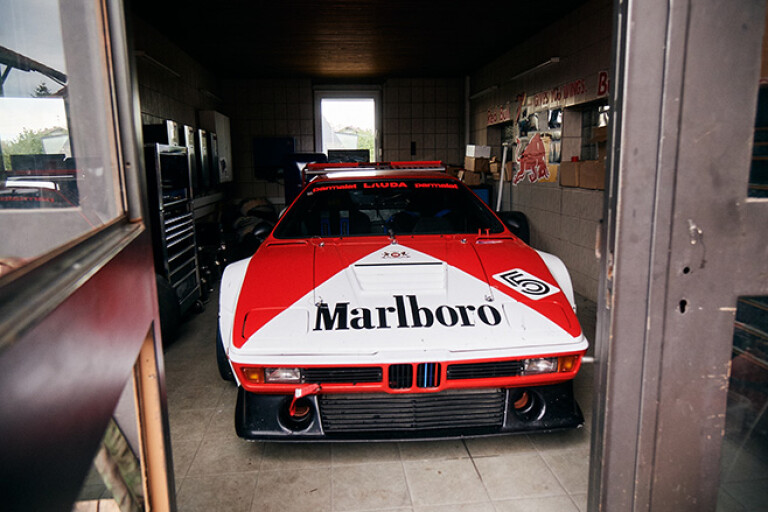
Wagner well knows the complicated M1 story. Without going into too much detail, back in the early ’70s BMW was still considered a minor player in the prestige ranks and wanted to lift its profile through motor racing. Jochen Neerpasch, lured from success as boss of Ford’s racing operations in Germany, established BMW Motorsport GmbH as a separate company.
With BMW’s heavy 3.0 CSLs becoming uncompetitive, Neerpasch set out to create a new Group 5 silhouette race car.
“The idea was to build a racing car and convert it to a road car,” Neerpasch tells me a few days after I hand back the M1. “We wanted to price the road car at DM100,000 (A$40,000) and the racing version at DM150,000 (A$60,000), when our racing 3.0 CSL cost DM350,000 (A$140,000). We also wanted Paul Rosche (BMW’s engine man) to develop a new 3.0-litre V8 engine that could also be used in a Formula One car.”
.jpg )
BMW Motorsport project E26 called for 800 cars to be built by Lamborghini with spaceframe construction, a twin-cam 24-valve version of BMW’s in-line six delivering 204kW as a road car or 345kW in race spec, and a fibreglass body styled by Giugiaro. Lamborghini’s Giampaolo Dallara, fresh from the Miura and Countach, assisted Neerpasch and Martin Braungart, who ran the project, in developing the car. Lamborghini built five prototypes.
“It was a fantastical technical co-operation,” according to Neerpasch. “At least once a week in 1977, taking turns, Martin and I would drive from Garching [Motorsport’s base] to Sant’Agata Bolognese [Lamborghini’s HQ], getting faster and faster as we improved the car, each trying to beat the other’s time. In the end we cut 30 minutes from our time.”
Then Lamborghini’s financial problems hit. The request for a $500,000 loan from BMW was denied. Neerpasch organised for trucks to collect all the prototypes and everything related to the M1 from Sant’Agata. After BMW’s board decided not to buy Lamborghini, the solution was to have the car assembled by Giugiaro’s Italdesign in Italy, with Italian suppliers providing the spaceframe and fibreglass body. The cars were then trucked to Baur in Germany for installation of the BMW hardware. Finally, they were sent to BMW Motorsport for quality assurance.
Inevitably, all the complications lead to drastic cost increases. The dramas meant the M1 launch was delayed by two years to February 1979. Production finally ceased in March 1981. In the end just 399 M1 road cars were built, plus another 54 race versions, this number made up of 48 complete race cars and six chassis that have since been assembled as race cars.
Neerpasch also convinced F1 heavyweights Max Mosley and Bernie Ecclestone to create a still-unique one-make race as part of the European F1 race weekend. The BMW Procar championship took the best five F1 drivers (except those from Ferrari and Renault) from Friday’s practice and mixed them with successful GT and Touring car drivers, all racing in identical M1s. The championship lasted two years (’79 and ’80) and was won by Niki Lauda and Nelson Piquet, respectively. Their prize? A new M1.
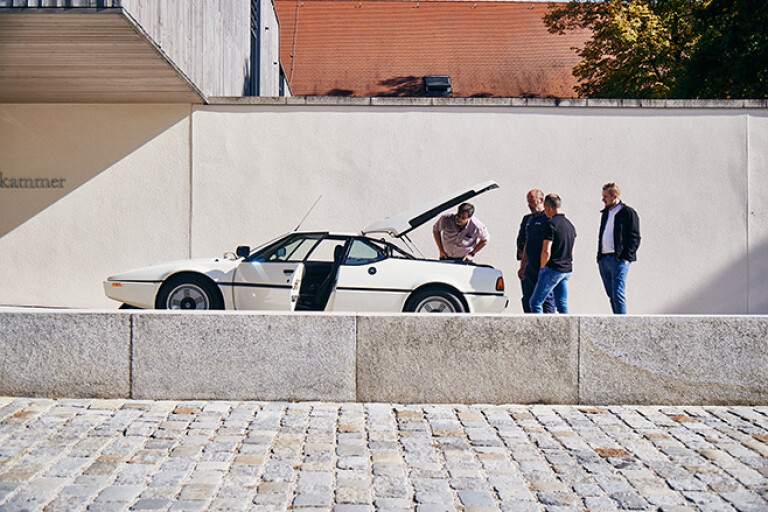
When buyers hesitated at the DM100,000 (A$40K) price, BMW began to lose interest in the M1. Once the silhouette formula was cancelled in 1980, the motorsport budget was cut by two-thirds and not even Neerpasch’s brilliant strategy of the one-make Procar series could save the M1.
By this time, Fritz Wagner was a freelance mechanic building Procars for Helmut Marko and, later, the Cassani Racing Team. Striezel Stuck won the last two races of the 1979 series with Cassani, instantly raising Wagner’s profile as the go-to Procar mechanic. But BMW wanted nothing to do with the M1, and became far more interested in becoming an F1 engine supplier to Brabham with a Rosche-designed 1.5-litre turbo engine.
By 1983, the M1s and all their componentry were just sad old racing cars, little better than scrap.
Eventually, in 1984, with nowhere to store all the M1 stuff, Motorsport suggested Wagner take the lot for DM100,000, a quarter of their real value. He was allowed to sell any of the parts except for the engines, and BMW insisted that if it needed any bits they could buy them back. The collection included the original E26 prototype – four of the five prototypes had been destroyed in crash tests – visually identical to the production car apart from having two wipers, different wheels and no BMW roundels on the rear corners. Wagner adds about 1000km a year to the car’s odo.
Wagner’s dream business, helping owners of the soon-to-be-coveted M1, was set for life. And still there was motor racing. The revival of Procar racing as a support event for the 2008 German Grand Prix and again in 2019, to celebrate the series’ 40th anniversary, took Wagner back to preparing M1s for many of the drivers, include Stuck. There are other historic events like the Daytona Classic 24-hour race, hence David Brabham’s Procar M1.
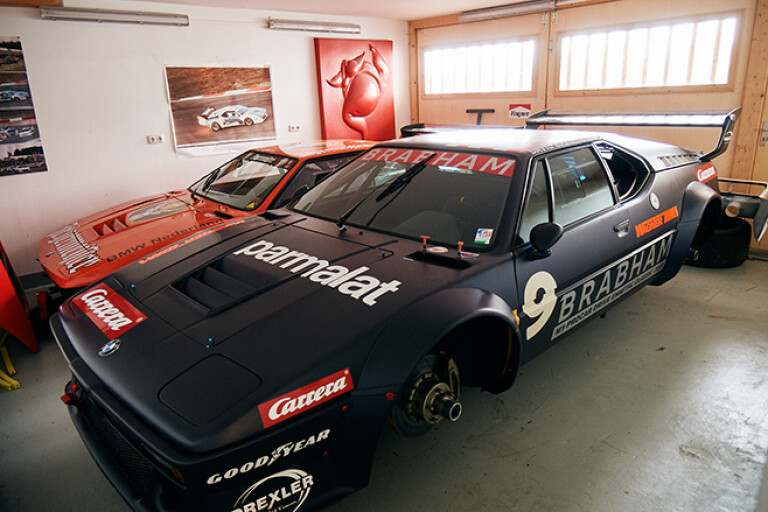
“Ten years ago my cars were the fastest,” says Wagner, “[but] not now – new materials, small tolerances, new parts, mean some cars have more power. I only use the original parts and would never use reproduced parts.”
Wagner admits he races for fun, not for the money, and swears he no longer keeps any accounts. “I never take holidays; every day is a holiday,” he says, admitting to working 15-hour days. “I am living in the right time with the advantage of real freedom. For me, progress stopped in the 1980s. I don’t have a cell phone or a computer.”
BMW Classic’s Benjamin Voss confirms, “I quickly learned the only way to contact Fritz is to ring his landline phone at lunchtime.”
Says Wagner, “I don’t need to go into the basement and open the safe to look at a Rembrandt. I only have to open the garage to see my Rembrandts.” He keeps a few alpaca “as a distraction from the cars” but it’s impossible not to conclude that the M1 is everything to him.

It’s a testament to the development skills of Neerpasch, Braungart and Dallara that the M1, conceived as a racing car, became the most civilised of all late-’70s/early-’80s supercars. A commercial failure, the M1 truly is one of the world’s great cars.
Says Neerpasch, “If the M1 had been properly developed, it could have been like the 911. BMW needs a car like this urgently and they don’t have one.”
Reluctantly returned, I’m unable to leave ‘my’ M1 without walking around it again. Twice.
BMW M1 Specs
Engine 3453cc 6cyl, dohc, 24v
Max power 204kW @ 6500rpm
Max torque 330Nm @ 5000rpm
Transmission 5-speed manual
L/W/H/W-B 4361/1824/1140/2600mm
Weight 1290kg
0-100km/h 6.0sec (claimed)
Top speed 260km/h (claimed)
Price A$40,000 (new)
On sale 1979-81

COMMENTS